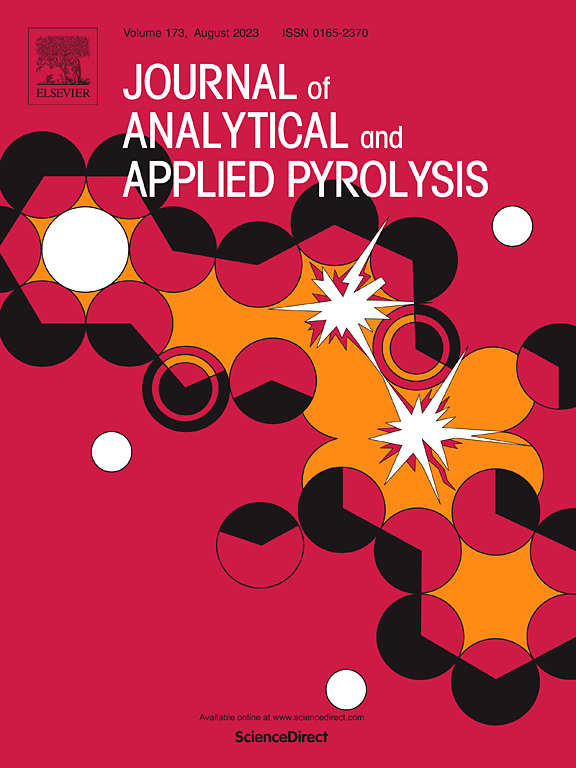ReaxFF分子动力学及实验研究。含水量对沥青热解产物分布的影响
IF 5.8
2区 化学
Q1 CHEMISTRY, ANALYTICAL
引用次数: 0
摘要
水气氛对煤的热解过程有着深远的影响。本文研究了0 %-24 %含水率下沥青热解产物的分布,并通过ReaxFF分子动力学(MD)对N和S原子迁移进行了跟踪。随着温度的升高,煤的质量比呈现出缓慢-快速-缓慢的下降趋势。在2700 K时,煤的质量比分别为2.65 %、6.46 %和16.51 %。焦炭中N、S原子的剩余量分别为62.5 %和43.3 %,迁移原子主要分布在轻焦油和气体中。N和S原子倾向于从官能团C4H5N和R-S-R中移出。升高的温度促进了C-N和C-S向H-N和H-S的转化,产生更多的NH3和H2S。在6 %的含水量和最低的总键数下,出现了最小的焦炭和最大的气体质量。重、轻焦油质量峰出现在含水率为12 %和18 %时。活性自由基OH∙和H∙随着含水量的增加而升高。研究成果对煤热解的污染控制和效率提高具有积极的现实意义。本文章由计算机程序翻译,如有差异,请以英文原文为准。
Water content effect on bituminous pyrolysis product distribution with ReaxFF molecular dynamics and experiment
The water atmosphere exerts a profound effect on the coal pyrolysis process. The present study dissects the bituminous pyrolysis product distribution at 0 %-24 % water content and traces the N and S atom migration via the ReaxFF molecular dynamics (MD). The coal mass ratio exhibits a slow-rapid-slow decline as the temperature rises. The coal mass ratio transfers to the pyrolysis heavy tar, light tar, and gas by 2.65 %, 6.46 %, and 16.51 % at 2700 K. The remaining N and S atoms in char are 62.5 % and 43.3 %, and the migrated atoms mainly distribute in the light tar and gas. The N and S atoms tend to remove from the functional group C4H5N and R-S-R. The elevated temperature promotes the conversion from C-N and C-S to H-N and H-S that contributes to more NH3 and H2S. The minimum char and maximum gas mass arise at the 6 % water content with the lowest total bond number. The heavy and light tar mass peak appears at 12 % and 18 % water content. The active radicals OH∙ and H∙ rise at a higher water content. The research achievement has positive practical significance for the pollution control and efficiency improvement of coal pyrolysis.
求助全文
通过发布文献求助,成功后即可免费获取论文全文。
去求助
来源期刊
CiteScore
9.10
自引率
11.70%
发文量
340
审稿时长
44 days
期刊介绍:
The Journal of Analytical and Applied Pyrolysis (JAAP) is devoted to the publication of papers dealing with innovative applications of pyrolysis processes, the characterization of products related to pyrolysis reactions, and investigations of reaction mechanism. To be considered by JAAP, a manuscript should present significant progress in these topics. The novelty must be satisfactorily argued in the cover letter. A manuscript with a cover letter to the editor not addressing the novelty is likely to be rejected without review.

 求助内容:
求助内容: 应助结果提醒方式:
应助结果提醒方式:


